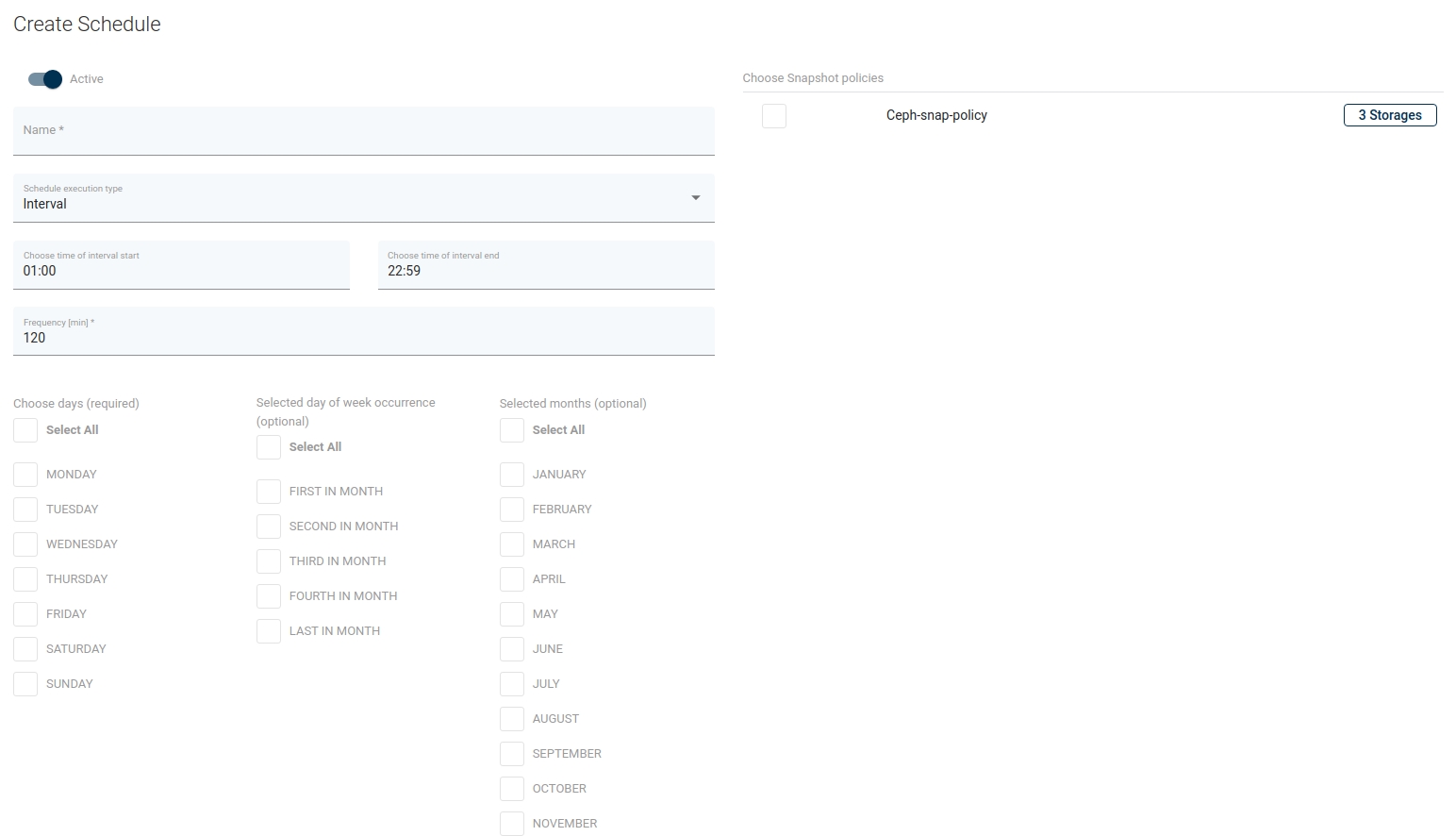Schedules
The Schedule defines when and on which days snapshots should be created. To define a new schedule, click Create Schedule button.

Now provide properties:

Schedule Active - enable or disable executing schedule
Name - schedule name
Execution Type - choose time or interval mode
Start Window - defines for how long since task start time scheduled tasks are allowed to be executed
Choose a time of day - for time execution mode defines when the task should be added to the queue
Choose a time of interval start - for interval execution mode defines when tasks should start
Choose a time of interval end - for interval execution mode defines when tasks should end
Frequency - defines how often the task will be executed during the interval
Choose days - last required parameter, select days of the week on which the task will be performed
You can also select a Storage Snapshot policy if it has been previously created